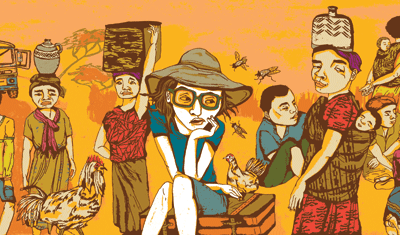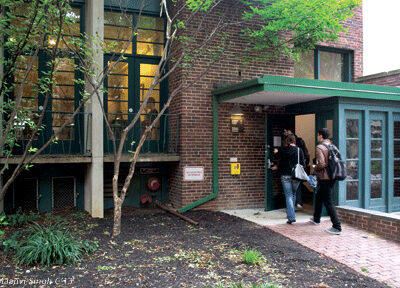The artisans of La Oroya can fashion silver into calla lilies, a Madonna bent in prayer, and grapes poised for plucking from the fruit bowl. With expertise from Wharton MBA students, they may soon learn how to shape it into greater profits for themselves and surrounding communities in the highlands of central Peru.
Five students, a professor, and a teaching assistant from Wharton’s Global Consulting Practicum (GCP) are traveling to Peru to meet their partners in this effort: MBA students from Lima’s Universidad del Pacifico; representatives from Doe Run Peru, a mining company that is sponsoring the project; and the local community.
Though Doe Run helped create a technical school where young people in these communities can learn the intricacies of silver-working, the artisans are not organized and don’t have access to outside markets, explains Dr. Marisa Guerin, Peru country manager for Wharton’s GCP.
“The goal is to help the community and the region project what the marketplace might be, who are the consumers in the U.S. they could reach, and what would be the channels for getting their silver artistry to people who would be able to appreciate it, fund it, and invest in their community,” she says. “It would be a self-sufficient enterprise. It won’t be Doe Run. It will be owned by the community.”
This is one of a dozen projects organized this year through the GCP, a 27-year-old course that allows MBA students to grapple with their classroom lessons while developing business plans for international clients, whose products and services range from Kobe beef in Chile to outsourcing in India to a flavored nutritional supplement made from Andean native grains.
“They learn all kinds of concepts, methods, and paradigms in their classes that aren’t so easy when you enter a messy, real-world situation and have to sort through that and have to learn which of the concepts are appropriate,” says Dr. Len Lodish, the GCP’s leader and cofounder, and vice-dean of Wharton West. For example, marketing classes teach the importance of positioning products. “When it comes to the issue of what should be the appropriate positioning for this [silverwork], there are a lot of options they have to understand,” Lodish says. “Even with the store owner, do you position it as ‘You’re good when you buy this, because you’re helping out social development of an area,’ or [you buy it] because it’s pretty, or because it has a certain mineral? What is it—a gift, a piece of art, a craft? The answers to those questions are not obvious.”
Since 2003, Wharton’s GCP has aimed to launch at least one social-impact management project a year, and the Peruvian silver-working enterprise, with its focus on community development, fits the bill.
“I think it’s very good for our students to be exposed to giving back as early and as often as possible in their careers, and this is a great opportunity,” Lodish says. “I think anything we can do to get our MBAs to understand that there’s more to the world than a [profit & loss] statement, the better.”
In 2005, GCP students worked with a nonprofit company that was helping an indigenous Peruvian group, the Yanesha, raise their standard of living and sustain the rainforest through the production of furniture, accessories, and housewares. “The team went in Jeeps and knee-high boots to meet with [the Yanesha] where they make these materials,” Guerin says. “They needed a plan for their operational expansion. If you suddenly present a beautiful bowl to Nordstrom’s and they say, ‘Send 50 next week,’ but the villagers do 10 a month, that’s not going to work. Another thing was to actually get [the products] to the port in Lima, when part of the year the roads are washed out.”
At the end of the process, when the students presented their final plans, “You’d have thought they were the marketing company. The students were so passionate about the possibilities” for placing the products.
Before and after the Peru trip, Wharton students will communicate with their partners through videoconferencing, phone meetings, and the Internet as they work on market research and implementation plans.
In May Doe Run Peru and the Universidad del Pacifico team will gather at Penn for a final colloquium in which the plans are presented. One day is set aside for “Bring Alive” activities that implement the next step of the project—for example, introducing the client to a major distributor.
“Students are not trying to sell a product, but help clients get plugged in while they’re here,” Guerin says. “This is still a world where face-to-face personal relationships matter.”
—Susan Frith




